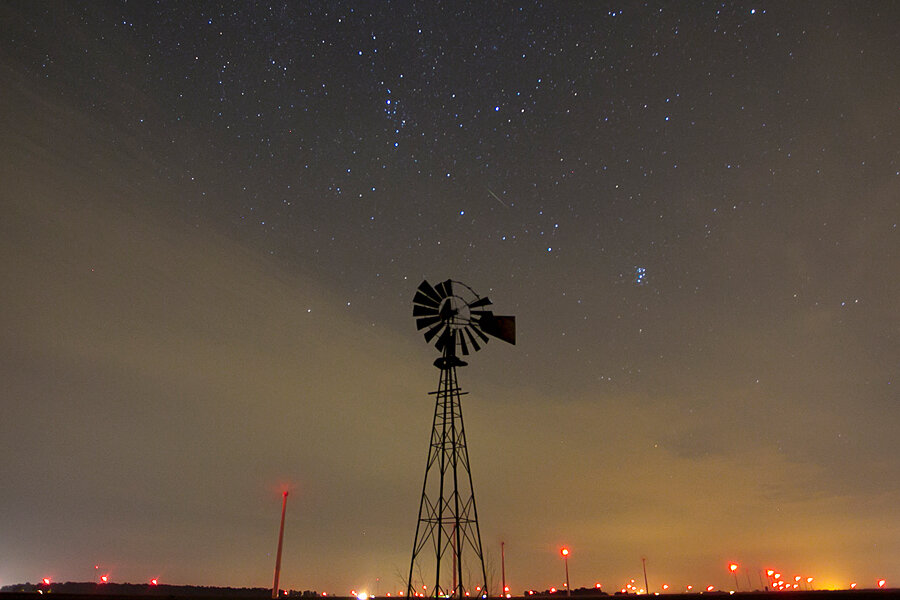Friday night lights (a.k.a. big meteor shower) coming to a planet near you
Loading...
A potentially dazzling display of meteors is coming Friday night and into Saturday. But unlike typical meteor showers, which return every year, this is a one-night stand, astronomers say.
The best viewing is projected to be in North America, weather willing, with the peak intensity coming around 3 a.m. Saturday Eastern Daylight Time. Depending on people's location and the level of light pollution, observers could see between 100 and 400 meteors an hour. The meteors will appear to originate from near Polaris, the North Star.
The meteors represent debris shed by comet 209P/Linear, discovered in 2004.
"This year's encounter is quite exceptional," writes Peter Jenniskens, a senior research scientist at the SETI Institute in Mountain View, Calif., in an e-mail.
The reason: Earth will be encountering an unusual convergence of a dozen debris trails from the many trails the comet left in its wake between 1798 and 1979.
In addition, many of the meteors could be brighter than usual. That's because the comet has been shedding more debris that is larger than 1 millimeter than comets typically release during their closest encounters with the sun. The closest approach took place May 6.
Astronomers have known for eight years that 209P/Linear's 2014 close approach to the sun could trigger a meteor shower. The object was discovered in 2004. Two years later, Dr. Jenniskens and colleague Esko Lyytinen calculated that any shower the comet triggered would peak around 3 a.m. EDT on May 24, 2014.
The relative paucity of dust in the comet's tail suggests that 209P/Linear is in a transition from active to inactive, astronomers Quanzhi Ye and Paul Wiegert at the University of Western Ontario wrote in an analysis of the comet's behavior, published last November. But a lack of observations prior to 2003, when the comet appeared in so-called prediscovery images, has made it tough to reconstruct past rates of debris production.
Thus the number of visible meteors likely to appear is uncertain.
The comet currently is outbound on a path that will bring it to within 5.2 million miles of Earth on May 29. It will continue to pass close to Earth through 2044, after which its orbit is expected to move farther away.
As for one and done, Jenniskens says when 209P/Linear returns in 2019, Earth could encounter some dust trails, but nothing like the relatively concentrated debris the planet will encounter Friday. A few more of these lesser encounters could occur after that.
Because of the transient nature of this meteor shower, researchers say they hope to get enough data from this shower to help them reconstruct more of the comet's history, a history that the team from the University of Western Canada says will be "irretrievably lost" without the added observations.






